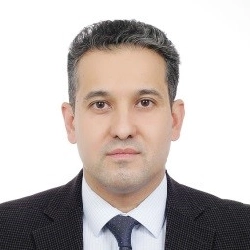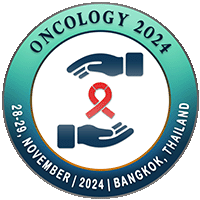
Muzaffar Maksudov
Fedorovich Clinic, UzbekistanTitle: Combined use of 68Ga-PSMA-11 PET/CT and multiparametric MR imaging in patients with prostate cancer
Abstract
Objective: To present the results of gallium 68 (68Ga) prostate-specific membrane antigen (PSMA)-11 PET/CT and magnetic resonance (MR) imaging in patients with prostate cancer.
Material and Methods: Ninety men who were scheduled for radical prostatectomy with lymph node dissection were recruited for this study. Multiparametric MR imaging (including DWI, T2-WI, and dynamic contrast enhanced imaging) and PET/CT data were correlated with results of final pathologic examination and pelvic nodal dissection to yield diagnostic accuracy. PET/CT with 68Ga-PSMA-11 was performed according to the whole body protocol. Interpretation of images was carried out visually and quantitatively with the calculation of SUVmax. A mean dose of 3.8 mCi ± 0.6 (140.6 MBq ± 22.2) of 68Ga-PSMA-11 was administered. Whole-body images were acquired starting 60-90 minutes after injection. Metabolic parameters were compared by using a paired t test and were correlated with clinical and histopathologic variables including PSA level and Gleason score.
Results: High focal (48 cases) or diffuse (42 cases) 68Ga-PSMA-11 uptake was found in the parenchyma of the prostate gland in all patients with primary prostate cancer, which corresponded to the tumor focus. Whereas multiparametric MR imaging depicted PI-RADS (Prostate Imaging Reporting and Data System) 4 or 5 lesions in 72 patients and PI-RADS 3 lesions in ten patients. Pathologic examination confirmed prostate cancer in all patients. In 36 patients, nodal metastases were additionally diagnosed. All patients with normal pelvic nodes in PET/CT imaging had no metastases at pathologic examination.
Conclusions: 68Ga-PSMA-11 PET/CT has a high potential in the work-up of prostate cancer patients, including primary diagnosis and staging, while MR imaging provides detailed anatomic guidance. Combined use of both imaging methods provides valuable diagnostic information and may inform the need for pelvic node dissection.
Biography
Muzaffar Maksudov has completed his PHD at the age of 30 years and DSc (doctor of Science) at the age of 40 years from Oncologic Institute, Uzbekistan. He is the head of Radiology department of “Fedorovich Clinic”, professor of the Department of Biomedical Disciplines EMU University, associate professor of radiology at the Institute of Postgraduate Education, Tashkent, Uzbekistan. He has over 50 publications.

